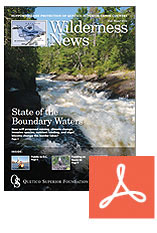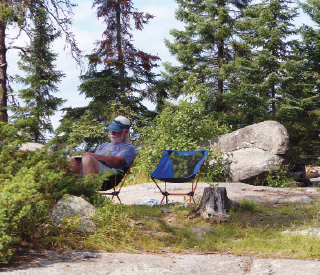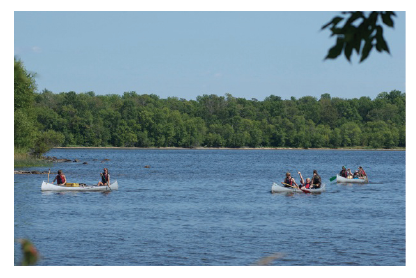COVER STORY:
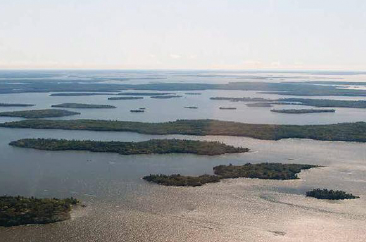
State of the Boundary Waters
By Alissa Johnson
How will proposed mining, climate change, invasive species, nutrient loading, and algal blooms change the border lakes?
The Quetico-Superior region of Minnesota and Canada bring to mind lake country—a landscape characterized by glacier carved lakes filled with clear, cold and clean water. Yet the list of possible impacts on northern Minnesota water quality is long: proposed mining, climate change, invasive species, nutrient loading, and algal blooms to name just a few. In some places, like Lake of the Woods, evidence suggests that changes are already under way. The open water season is 28 days longer than it was during the 1960s, and public concern over algal blooms helped prompt water experts to rethink how issues are monitored. Yet even where water quality remains unimpaired, studies are underway, forming what some scientists call a defensible baseline—an understanding of what’s currently happening in the region so water can be protected in the future. Here’s a look at three studies underway:
Read More >
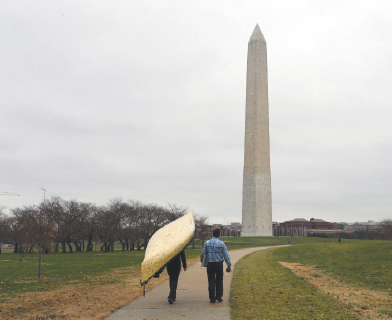
Paddle to D.C. – Ely Adventurers’ Latest Expedition Carries Concerns About Mining
By Greg Seitz
A big storm hit the East Coast the day before Thanksgiving. An old-fashioned Nor’easter. Wet and windy, it forced Dave and Amy Freeman to abandon Chesapeake Bay, load their canoe on portage wheels, and pull it along the shoulder of roads to keep making progress.
Nineteen hundred miles or so behind them, another hundred to go, Dave sounded tired but confident over the phone. They would make it to Washington, D.C. by December 2—in time for scheduled welcome events—if they kept moving. They felt good about what the trip had accomplished: They had reached more people than they had hoped as they canoed and sailed from Ely to the capital. They knew thousands of people around the country cared about the Boundary Waters and would not let anything happen to harm it.
“Like Edward Abbey said, ‘The idea of wilderness needs no defense, it only needs more defenders,’” Dave said. Read More >
PADDLING ON ROUTE 66
by Larry Christianson
Paddling season arrived for me with great personal meaning as this is the time where I planned to catch up to my age in the sense of arriving in autumn at boundary waters canoe trip number 66 at age 66. A long-term goal that has been lurking out there on my life horizon—defining the theme for this year 2014 as “Paddling on Route 66.”
I feel like a relic. An old guy still able to paddle and portage and sleep in a tent and catch fish and enjoy wilderness canoe trips. I can hardly drive a car anymore, yet can paddle with strength and confidence. All very ironic. Another good example of going the unhurried way with more enjoyment and meaning. The lure of wild places remains firmly embedded in my heart, even though at a slower pace and different style in the midst of mounting limitations and declining health. Just being on scene in the boundary waters matters to me big time. Drinking in the beauty along with morning coffee and evening happy hours, and all the relaxing stretched in between.
Read More >
Laketrails Base Camp
by Alissa Johnson
When Laketrails campers arrive at base camp, costumed counselors greet them, singing and dancing, hooting and hollering, and banging on drums. “We’re famous for our welcomes of campers,” says executive director Sue Lemm. And it’s easy to imagine what a sight it must be, especially after the journey to get to Laketrails—simply arriving at base camp is no small feat. Campers typically travel by bus, riding all the way to northern Minnesota, into Canada and then back into Minnesota, into that tiny portion of the state that juts into Canada above Lake of the Woods. They travel the last six miles by boat, from Young’s Bay on Lake of the Woods to the island where Laketrails and the counselors await. For some campers, the journey takes several hours. Read More >


